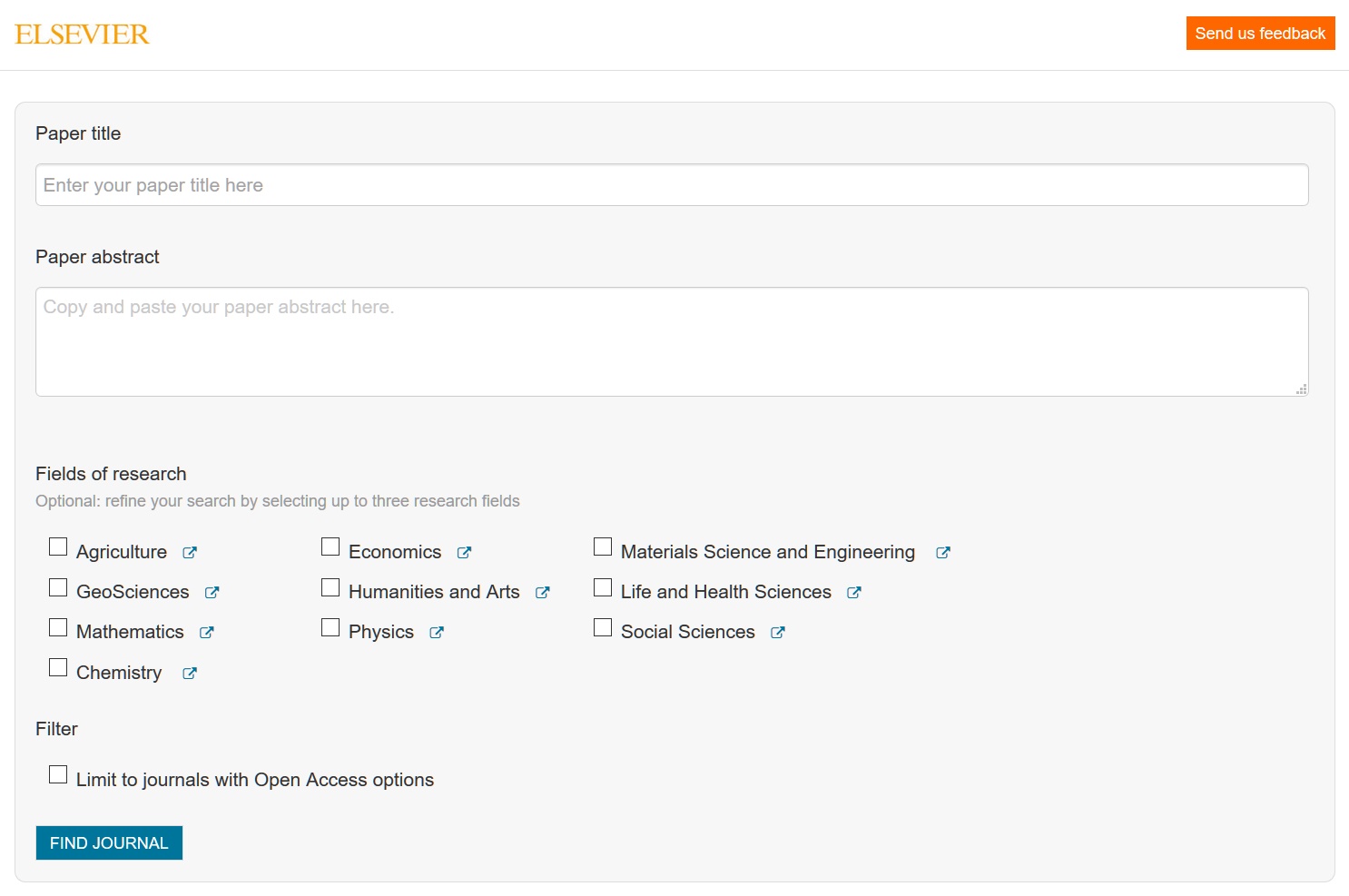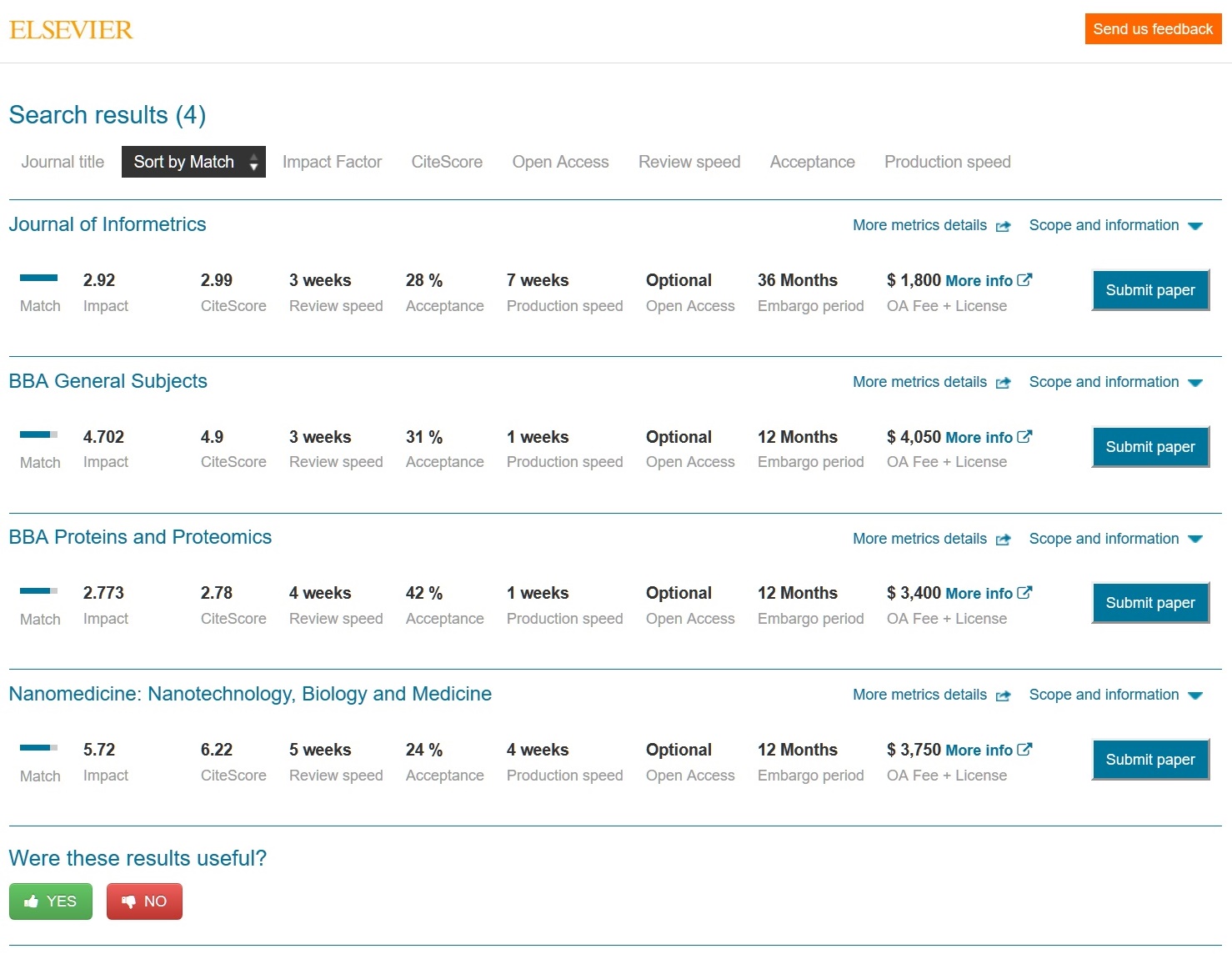Elsevier Journal Finder: How to Select an Appropriate Journal for Publishing

Researchers frequently spend time thinking about journal selection. What should be the best journal to publish their academic research? Academic publishing giant Elsevier aims to simplify this process. They have added the Elsevier Journal Finder to their list of research tools.
Why Elsevier Journal Finder?
Elsevier Journal Finder uses the Elsevier Fingerprint Engine. This Fingerprint Engine creates an index of weighted terms that defines the text. The text can be any scientific document including grants and project summaries. The Fingerprint Engine basically compares the fingerprint of your article to other articles. The Journal Finder will then suggest an Elsevier journal which has published articles with a similar fingerprint to yours.
Elsevier’s Fingerprint Engine uses many thesauri in order to be effective. It uses thesauri from the Life Sciences, Engineering, Earth and Environmental Sciences, Arts and Humanities, Social Sciences, Mathematics, and Agriculture. It is also possible for the Fingerprint Engine to use an institution’s thesauri.
Elsevier’s Journal Finder helps researchers match their abstract to one of more than 2,200 Elsevier journals. These journals cover the Health Sciences, Life Sciences, Physical Sciences, and the Social Sciences. Using this fingerprint matching system helps authors submit their papers to journals that are the best fit. This should reduce the number of rejections that researchers have to face. Fewer rejections means less time spent on re-submissions.
How to Use the Elsevier Journal Finder
Selecting a journal is easy. A researcher will enter the title, abstract, and/or keywords on the Journal Finder page. It is possible to select up to three research fields to refine the search. You may also choose to limit the results to Open Access journals. Clicking on “Find Journal” will take you to the results page.
This research tool will show the top ten search results. Each listing includes a set of headings such as the journal name and how well its fingerprint matched your article. The listing includes the journal’s CiteScore and impact factor. Elsevier Journal Finder also reports the average review speed, acceptance rate, publication speed, and Open Access fee. The Journal Finder makes it possible to sort the results by any of the headings. From the search results page, you can access information on the journal’s scope. It is also possible to go to the journal’s page or submissions portal.

The current version of the Elsevier Journal Finder uses new Natural Language Processing (NLP) technology to analyze the data a researcher enters. The research tool uses noun phrases, avoids bias due to journal size, and utilizes the Best Matching Algorithm (BM25). This means that authors can expect better accuracy from its recommendations.
Benefits of the Process
One of the major reasons a paper is rejected is because it did not fit the scope of the journal. This can happen even if the paper is excellent. If more authors submitted their work to appropriate journals, rejection rates should go down. Using a system that helps with journal selection by matching a paper to journals that have published similar works should save an author’s time.
The Elsevier Journal Finder takes the guesswork out of finding a good journal for your next paper. It gives authors a list of journals that have published similar work. The convenient format of the search results also allows authors to sort based on the headings that are most important to them. The only limitation is that the search returns the best Elsevier journal matches.

There are thousands of journals available today. Journal selection is, therefore, a complex choice. Being aware of the scope of a journal can definitely help to narrow the list of potential journals to publish in. Even after doing this, however, your academic research may still be rejected. Elsevier Journal Finder is an easy to use research tool that takes selection a step further. It uses NLP and algorithms to find the most relevant journals having similar published articles. It also gives you additional details about the journal to help you make a final decision.
Recently, Enago Academy launched the Open Access Journal Finder (OAJF) that aims at enabling research scholars to find open access journals relevant to their manuscript. OAJF uses a validated journal index provided by Directory of Open Access Journals (DOAJ) – the most trusted non-predatory open access journal directory in its search results. The tool displays vital journal details to the scholars including publisher details, peer review process, confidence index (indicates similarity between matching keywords in the published articles across all journals indexed by DOAJ), and publication speed.
Would you use a research tool to help you choose a journal? Do you think the Fingerprint matching service will decrease your chances of getting rejected? Have you used Elsevier’s Journal Finder before? Please let us know your thoughts in the comments below!










It is really helpful and useful
This is a great help to people like us . Where publication of papers is difficult. I greatly appreciate this information.
thank you
Nano